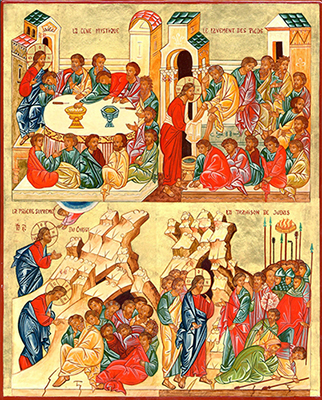The chapel
Edith Royer's room has been turned into a chapel in the Byzantine style, with décor that is appropriate to the celebration of the liturgy.
The frescoes
The frescoes on the ceiling are the work of one of the Sisters in the community, based on a design by the iconographer Archpriest Georges Drobot.
The cycle of paintings in the sanctuary includes Christ the Lamb of God on the Paten, surrounded by angels and hierarchs [canonized bishops and Doctors of the Church], symbolising the mystical meaning of the Divine Liturgy that is being celebrated in their presence. Above them, the Virgin Mary orante (with uplifted arms) offers our prayers to Christ.

The cycle of paintings in the vault is the cycle of the Gospels and religious festivals. We see here the icons of the major feasts of the Church's year; they are either based on the Gospel accounts or inspired by the oral tradition of the Church.
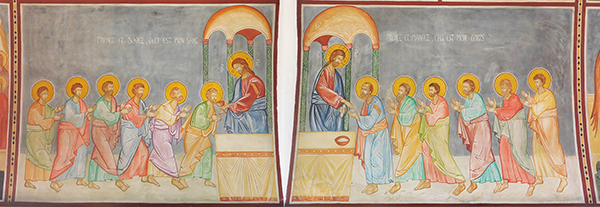
The events which precede the Gospel story are represented by the icons of the Nativity of the Mother of God and her Entry into the Temple. These two icons tell us of those saintly persons who listened constantly to the voice of the Lord, either in their own homes, like Joachim and Anna, or in a solitude dedicated to God, like Mary in the Temple in Jerusalem.
This same attentive listening to God, allied to conscious obedience, is characteristic of Mary in the first episode in the series to be taken from the Gospels: the icon of the Annunciation, when the promise of salvation became a reality. It is natural that the Annunciation should be followed by the Nativity and the Adoration of the Magi (to illustrate the adoration of the Saviour by the human race).
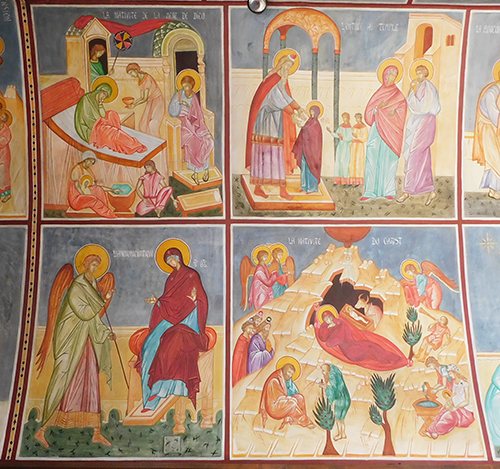
Two icons from the childhood of Christ, which are also icons representing feasts of the Church, lay emphasis on the two aspects of the Person of Jesus, the human and the divine. They are the Presentation in the Temple and Jesus among the Doctors of Israel. The Baptism of Christ marks the beginning of His public life.
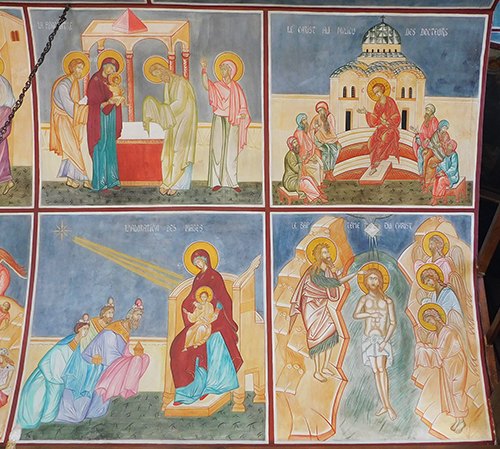
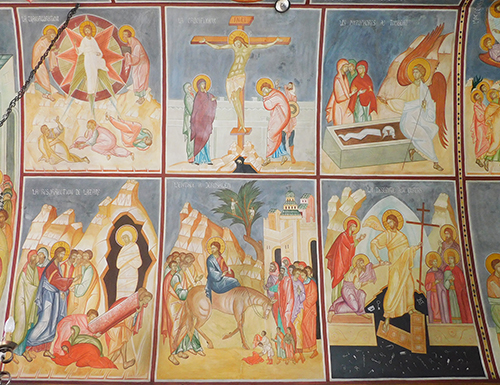
The Cross is at the centre of the next row of icons in the cycle. It is the symbol of salvation par excellence. The icons around it follow on in chronological order: Christ approaches His Passion (the Transfiguration, the Resurrection of Lazarus, the Entry into Jerusalem), the Crucifixion and the Resurrection.
The Resurrection of Christ as depicted according to the tradition of Eastern iconography has two aspects, the temporal or historical aspect (the appearance of Christ to the myrrh-bearing women) and the timeless and dogmatic aspect (the descent of Christ to the underworld and His victory over Satan and death).
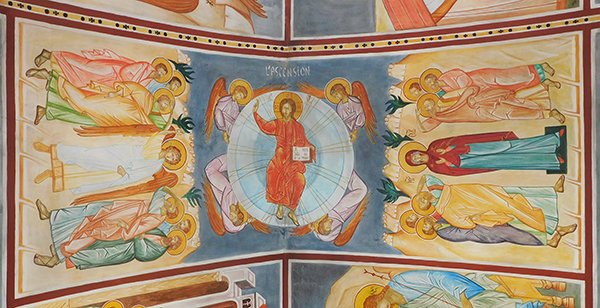
After the icon of the Ascension, which is above the altar, come two icons traditionally associated with the Feast of Pentecost: the Descent of the Holy Spirit on the Apostles, and the Trinity (the three visitors to Abraham).
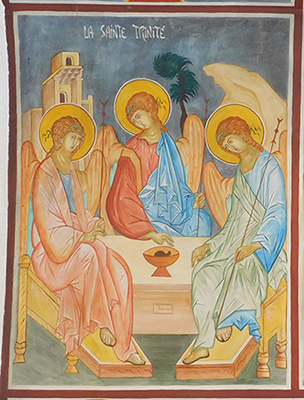
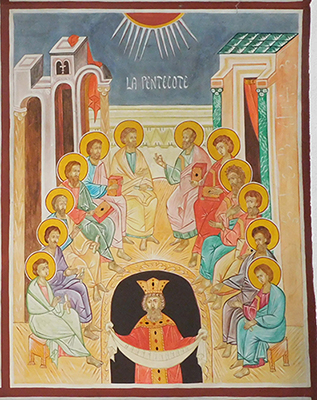
The great icon of the Dormition of the Mother of God is in its traditional place near the entrance to the chapel. It depicts the moment when the history of the Apostles is linked to the history of the Church; it signifies the continuity of Christ's teaching and His everlasting presence among those who are gathered in His name.

The iconostasis
The iconostasis is a screen covered with icons which separates the sanctuary from the nave. The two icons flanking the central doors depict , on the one hand, Christ holding the Book of the Gospels, and on the other, the Mother of God showing us her Son. The scene of the Annunciation is depicted on the doors; this is the Virgin Mary's "Yes" which opens for us the gates of Heaven. On the right is the icon of the patron saint of the chapel, the Holy Prophet Elijah.
